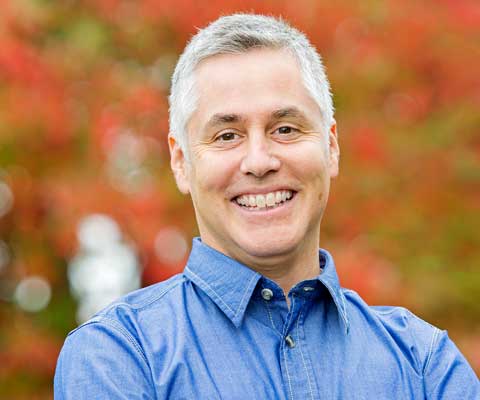Alberta’s Ingenuity Lab (first mentioned here in a November 19, 2013 posting) seems to have been launched sometime in 2012 (or maybe 2013). It;s a province of Alberta initiative and at the time of I first heard of it I questioned the necessity for another nanotechnology institution in Alberta (or anywhere else in Canada for that matter).
Amuse bouche: a roundup of the Canadian nanotechnology scene
Since 2012/3 a great many things have changed. The National Institute of Nanotechnology (NINT) seems to have become almost completely dormant; the same can be said for Canada’s NanoPortal and nanoAlberta.
Adding to this brief roundup of the nanotechnology scene in Canada, the province of Alberta lists their various facilities on their Nanotechnology and microsystems webpage. As that page was last updated on 2012 you may find the information no longer viable.
A quick search for NanoQuébec yielded Prima Québec; Pôle recherche innovation matériaux avancés (that’s research for innovation and advanced materials; I think). Finally, there is still a Nano Ontario.
Should anyone know of a Canadian ‘nano’ institution that should be included, please do let me know in the ‘comments’.
Ingenuity Lab: Basics
The University of Alberta’s Faculty of Engineering’s Engineering Research webpage (copyright 2002-2018) describes the Ingenuity Lab this way,
ingenuity Lab (the Nanotechnology Accelerator) is a large scale ($100M), 10-year, multidisciplinary research and development initiative co-located at the Faculty of Engineering, the University of Alberta and the National Institute for Nanotechnology. Led by chemical engineering professor and Canada Research Chair holder Carlo Montemagno, iNgenuity is focused on groundbreaking bionanotechnology advances and innovative business practices that will enable Alberta to become a world-leading centre for nanotechnology innovation. (www.ingenuitylab.ca)
That’s a very large enterprise by Canadian standards.
After a great deal of initial promotion for both the lab and its director, Dr. Carlo Montemagno, the lab settled into a pattern of making bold announcements, many of which I covered here,
-
Biomining for rare earth elements with Alberta’s (Canada) Ingenuity Lab (Feb. 3, 2014 posting)
-
Alberta’s Ingenuity Lab launches nano game for children (five to 10 years old) (Feb. 7, 2014 posting)
-
Canada’s Ingenuity Lab looks for the causes of cataract formation and preventive treatment (July 4, 2014 posting)
-
An alliance of nano researchers: Ingenuity Lab and University of Alberta (Canada) professors (Sept. 16, 2014 posting)
-
Ingenuity Lab (Alberta, Canada) and The New Economy (October 2, 2014 posting)
-
Alberta’s Ingenuity Lab opens new facility in India and competes in the Carbon XPRIZE (May 10, 2016 posting)
-
Canada’s Ingenuity Lab receives a $1.7M grant to develop oil recovery system for oil spills (September 15, 2016 posting)
The blog search engine here privileges titles containing the search term (in this case, Ingenuity Lab) first and then restarts, in date order, all of the other ‘nontitle’ mentions. (I stopped with the titles.)
Last year (2017), there was a major change at the Ingenuity Lab, the director, Dr. Carlo Montemagno, moved to Illinois to become the Chancellor for Southern Illinois University (SIU). Unfortunately, I did not receive any response from Dr. Montemagno to the interview questions I sent him, twice, via email. I also emailed, once, SIU’s chief marketing and communications, Rae Goldsmith. For the curious, here are the questions,
(1) What differences did you experience as a researcher between the Canadian approach to nanotechnology (the National Institute of Nanotechnology is one of the Canada National Research Council’s institute’s) and the US approach (National Nanotechnology Initiative, a central funding hub and research focus for the US government)?
(2) Will your experience in Canada affect how you approach your work at SIU? Assuming, there is some influence, how will that experience affect your work at SIU?
(3) What are you most proud of achieving while leading Alberta’s Ingenuity Lab?
(4) Could you reflect on the trends you see with regard to nanotechnology not just in Canada and/or the US but internationally too?
(5) Is there anything else you’d like to add?
My questions were pretty much puffballs. In the meantime, it seems Dr. Montemagno attracted some serious journalistic interest, from a February 21, 2018 article by Dawn Rhodes for the Chicago Tribune,
When Chancellor Carlo Montemagno took the helm at Southern Illinois University Carbondale in July [2017], he set to work on a plan to dismantle and rebuild academics at the struggling campus, which has hemorrhaged enrollment over the past several years. His idea was a bold one, rarely if ever attempted at a large public university: eliminate academic departments.
The plan drew ire as well as praise, opening some bitter fissures among faculty, students and staff. That discord seems to have grown in recent weeks, particularly as the chancellor has become embroiled in controversies that have intensified scrutiny of his leadership.
In January [2018], SIU student paper The Daily Egyptian revealed the university hired Montemagno’s daughter and son-in-law shortly after he assumed the chancellor post. The investigation showed that the couple’s work history traces the same path as Montemagno’s, with the pair having held jobs at the same institutions he worked at for the past decade.
There have also been complaints that Montemagno is too directly influencing other hiring at the university — which he denies.
Both issues are the subjects of separate ethics investigations, SIU system President Randy Dunn said.
Then on Thursday [February 15, 2018?], the chancellor said he used part of his relocation allotment from the university to help cover the costs of moving his daughter’s family to southern Illinois, as well, adding up to $16,076.45. Montemagno said “there was a misunderstanding about what could be covered in the move” so he picked up the tab for part of the added costs and reimbursed SIU for the remaining expense of moving his daughter’s household.
The revelation that the new chancellor’s family members received jobs at Southern Illinois, which cut dozens of positions just weeks before his arrival and in the midst of the two-year state budget impasse, irked many at the university. It also drew sharp retorts from a member of the Illinois Board of Higher Education.
In an interview Monday [February 19, 2018?], Montemagno said he recognized the optics of using part of his moving allowance for his daughter’s benefit and decided to pay back the university. But he said he never hid the fact that his family members were hired by SIU and he shrugged off criticism he has received in recent weeks. Although it caught some by surprise, SIU leaders had, in fact, approved the family hires as part of the chancellor’s hiring negotiations.
…
Rhodes’ article provides fascinating insight into the political struggles currently taking place at SIU. I encourage you to read the piece in its entirety if you have the time.
Ingenuity Lab: We are family
The appearance of Melissa Germain (Montemagno’s daughter) and her husband, Jeffrey Germain (Montemagno’s son-in-law), in the article was a bit of a surprise. Both were involved with the Ingenuity Lab. (I contacted Melissa Germain years ago to get on the lab’s media list to receive all their news releases. She agreed to put me on the list but I never received anything from them. Whether that was by accident or by design, I’ll never know. Jeff Germain was, for a time, the Ingenuity Lab’s interim director.)
Logically, this means that the University of Alberta hired not only Dr. Montemagno but also his daughter and son-in-law. As Rhodes’ article notes, it’s not unusual for faculty members to insist their spouses also be given jobs. The surprise here is that Montemagno’s daughter and her spouse were part of the deal, informal (SIU?) or otherwise (Alberta?).
In trying to find more information about the Ingenuity Lab’s budgets and financials (unsuccessful), I stumbled across the glassdoor.ca site (accessed March 5, 2018), which features some comments about the working environment at Alberta’s Ingenuity lab,
11 Jul, 2017
Helpful (1)
“Family Run Lab with Public Funding at the University of Alberta”
Current Employee – Anonymous Employee in Edmonton, AB
Doesn’t Recommend
Negative OutlookI have been working at Ingenuity Lab full-time (More than a year)
Pros
-You will learn how to handle uncomfortable environment very well.
-There are some good researchers and staffs in the group.Cons
– It is a public funded lab that controls by family members. This is not the issue for a private company, but it makes it really unacceptable for a public funded research group.
– The family members without required credentials can override any decision easily.
– The management team (the family members) spend lots of public funding for publicity
-Some of the group members bend easily with wind to stay … Show MoreAdvice to Management
-Presenting FALSE FACTS has expiry date! It is important to leave good name behind.
-Bringing family members without any credentials on board is not being wise.
– Just investing on gaining publicity is not enough. Nowadays, having output has the final say.Share on Facebook
Share on Twitter
Share via Email
Copy LinkOther Employee Reviews for Ingenuity Lab
21 Mar, 2017
Helpful (3)
Ingenuity Lab Logo
“A family run business”Former Employee – Anonymous in Edmonton, AB
Doesn’t Recommend
Negative OutlookI worked at Ingenuity Lab full-time (More than a year)
Pros
Well funded lab with all the facilities located in the National Institute of Nanotechnology. The labs are at a great location and easy access to Tim Hortons.
Cons
All the administrative posts are filled with family members. No good communication between researchers and the director is surrounded by his trust worthy group of highly qualified politicians. The projects are all hypothetical and there is a lack of passion for hardcore fundamental research. They run as in commercial companies and does not belong in the NINT. They should relocate in the industrial areas of South Edmonton.
Advice to Management
Start publishing papers in peer reviewed journals rather than cheap publicity in local and national newspapers.
Share on Facebook
Share on Twitter
Share via Email
Copy Link8 Feb, 2016
Helpful (2)
Ingenuity Lab Logo
“Clouded vision of ingenuity”
Former Employee – Anonymous EmployeeI worked at Ingenuity Lab full-time (Less than a year)
Pros
Plenty of funding, this place will be in business for at least the next three years. Most of the people are a pleasure to be around.
Cons
There is noticeable friction between different team leads. Lack of information between groups has led to a few costly mistakes. It is run much more like a company than research group, results that can make money or be patent-able are the only goals.
Advice to Management
Ditch the yes-men family members that you have installed, and hire industrial trained scientists if you want the results you are looking for.
It’s hard to know if there is one disgruntled person waging a campaign or if there are three very unhappy people from a lab team of about 100 scientists. But the complaints are made several months apart, which suggests three people and generally where there’s one complain there are more, unvoiced complaints. Interestingly, all three complaints focus on the Ingenuity Lab as a ‘family-run’ enterprise. It seems that Montemagno, like a certain US president, prefers to work with his family.
According to this article in The New Economy, Montemagno came to Alberta because it offered an opportunity to conduct research in a progressive fashion,,
In 2012, Dr Montemagno was lured back to the world of research when the opportunity to lead a large-scale nanotechnology accelerator initiative in Alberta materialised. His background traversing agricultural and bioengineering, petroleum engineering, and nanotechnology made him an ideal choice to lead the exciting new programme. The opportunity was significant and he viewed Alberta as a land of opportunity with an entrepreneurial spirit; he decided to make the move to Canada. The vision of advancing technologies to solve grand challenges recaptured his imagination. The initiative is now branded as Ingenuity Lab. [emphases mine]
Located within the University of Alberta, Canada, Ingenuity Lab is an assembly of multi-disciplinary experts who work closely to develop technological advancements in ways that are not otherwise possible. Not only is Ingenuity Lab different to other initiatives in the way it operates its goal-orientated and holistic approach, but also in the progressive way it conducts research. In this model, limitations on creativity that surround the traditional university faculty model (which rewards individual success and internal competition) are overcome.[emphases mine]
Three (at least) employees seem to suggest otherwise. Still, there are situations where trusted colleagues, familial or not, migrate together from one employer to another. For example, Nigel Lockyer was the Director for TRIUMF (Canada’s particle accelerator centre; formerly, Canada’s National Laboratory for Particle and Nuclear Physics). He brought on board with him, Timothy Meyer someone with whom (I believe) he had a previous working/professional relationship. Lockyer is now the Director of the Fermilab (University of Chicago, Illinois, US) and guess who also works at the Fermilab? Lockyer and Meyer were quite successful at TRIUMF and they appear to be revitalizing the Fermi Lab, which until their tenure seemed moribund. (See: University of Chicago Sept. 27, 2017 news release: Nigel Lockyer appointed to second term as director of Fermilab; and Timothy Meyer’s profile page on the Fermilab website to confirm the biographical details for yourself.)
These days, the Ingenuity Lab (accessed March 5, 2017) lists Murray Gray, PhD, as their interim director. He is a professor emeritus from the University of Alberta. There is still an Ingenuity Lab website, Facebook account, and Twitter account. The Twitter account has been inactive since August 2017, their website is curiously empty, while the Facebook account boasts a relatively recent posting of a research paper.
Final thoughts
With all the money for science funding flying around, it seems like it might be time to start assessing the ROI (return on investment) for these projects and, perhaps, giving a closer eye to how it’s spent (oversight) in the first place. In Canada.
Other than an occasional provincial or federal audit that might or might not occur, is anyone providing consistent oversight for these multimillion dollar science investments? For example, the Canadian federal government recently announced $950M investment in five superclusters (see Feb. 15, 2018 Innovation, Science and Economic Development Canada news release). One of the superclusters has to do with supply chains and AI (artificial intelligence. Here’s what Paul Wells in a Feb. 15, 2018 article for Maclean’s observed,
The AI supply-chain group from, essentially, Montreal (wait! I guess I’m just guessing about that) is comically gnomic. I could find no name of any actual person or company anywhere on the website. Only a series of Zen riddles. “Over 120 industrial and enabling institutions, from very large firms to start-ups, have joined forces in this journey,” the website says helpfully, “and we have strong momentum.”
You can see it for yourself here. Who will be providing oversight? At what intervals? And, how?
In searching for further information about funding and budgets, I found this (in addition to the feedback from disgruntled Ingenuity Lab employees), Dr. Carlo Montemagno received $556,295.06 in compensation and $40,215.81 for ‘other’ in 2016 and $538,345.35 in compensation and $37,815.98 for ‘other’ in 2015 (accessed March 5, 2018).
The information about Dr. Montemagno’s salary and benefits can be found on the University of Alberta’s Human Resource Services public Sector Compensation Disclosure page. Presumably, the 2017 figures have not yet been released, as well, Montegmagno’s 2017 salary .may not be disclosed for the same reason neither Melissa Germain’s nor Jeffrey Germain’s salaries are disclosed,
The Alberta government’s Public Sector Compensation Transparency Act (2015) requires that the University of Alberta disclose the name, position, compensation, non-monetary benefits and severance for all employees whose total compensation plus severance exceeds an annual threshold [emphasis mine]. Remuneration paid to members of the Board of Governors will also be disclosed. Disclosure must be published annually on or before June 30th for compensation paid in the previous calendar year. Employees who terminated between January 1 and June 30 that received pay in lieu of notice, pay during a period of notice and/or severance pay and the total of those amounts exceeds the threshold will be included on the disclosure list each December. The disclosure list will identify the name and the amount of severance. Any other compensation will be reported on the next June’s disclosure.
The Public Sector Compensation Transparency Act applies to more than 150 agencies, boards, and commissions, to independent offices of the Alberta Legislature, and to employees of Convenant Health.
For questions or concerns, please contact Wayne Patterson, Executive Director, Human Resource Services.
There may have been a good reason for Montemagno’s compensation of over 1/2 million dollars per year, for 2015 and 2016 at least. Researchers are expected to bring in money through research grants. I found one funding announcement for $1.7M from Natural Resources* Canada on the Ingenuity Lab’s news release page (accessed March 5, 2018).
Oddly, Dr. Montemagno was appointed chancellor at SIU on July 13, 2017 and his start date was August 15, 2017 (July 13, 2017 SIU news release). That’s unusually fast for an academic institution for a position at that level. Not to mention Montemagno’s position in Alberta.
SIU is not the only place to inspire Montemagno to dream (eliminate academic departments from their university as per Rhodes’ article). He dreamt big for Alberta too. From an Oct. 30,2015 article by Gary Lamphier for the Edmonton Journal,
…
Faced with so many serious challenges, it’s no surprise Alberta’s oilpatch and its once-envied economy are sputtering, prompting gleeful outbreaks of schadenfreude from Vancouver to Toronto.
But what if Alberta could upend the basic economic paradigm [emphasis mine] in which it operates? Suppose Alberta could curb its carbon emissions, thus shedding its nasty environmental reputation and giving it the social licence needed to build new oil pipelines, while diversifying the economy at the same time?
Sound impossible? Don’t be so sure. That’s Carlo Montemagno’s dream, and the world-renowned director of Alberta’s Ingenuity Lab, who heads a team of about 100 scientists, has a bold plan to do it. It’s called the carbon transformation project, and he hopes to pull it off by the end of this decade. [emphases mine]
If it works, the scheme would capture the carbon dioxide (CO2) emitted at any one of dozens of Alberta industrial sites, from power plants to petrochemical facilities, without requiring any massive retrofits or the kind of multibillion-dollar investments associated with carbon sequestration.
Through a process employing artificial light, water and electricity, it would harness industrial CO2 emissions to create more than 70 commercially valuable carbon-containing chemicals, Montemagno says. Such chemicals could form the essential building blocks for dozens of consumer and industrial products, ranging from auto antifreeze and polyester fibres to food additives.
The plan is brilliant in its simplicity. Montemagno’s team aims to turn a bad thing — CO2 — into a good thing, one that creates value, wealth, and new jobs. And he hopes to do it without trashing Alberta’s existing oil-fired economy.
Instead, his concept involves simply tacking one more process onto the province’s industrial sites, thus creating valuable new feedstock for existing or new industries.
“If it all works, it means you can produce products you need to satisfy local economic needs, create more value from emissions, generate more revenue and more products,” says Montemagno, who has science degrees from Cornell University, Penn State, and a PhD in civil engineering and geological sciences from University of Notre Dame.
“The big argument today is, you burn fossil fuels and release CO2 into the atmosphere, and end up causing global warming,” he says.
“But the problem isn’t that you’re burning fossil fuels. The problem is you’re releasing CO2 into the atmosphere. So is there an opportunity to not release CO2 and instead capture and use it in other products? It’s really about stating the problem in the appropriate language.”
With funding from Alberta’s Climate Change and Emissions Management Corp., Ingenuity Lab is hard at work developing a $1.3-million demonstration project to prove the concept. Montemagno hopes to have an industrial-scale pilot project running in three to four years. [emphasis mine]
…
Montemagno certainly had an exciting plan. And, 2018 would be around the time someone might expect to see the “industrial-scale pilot project for carbon transformation” mentioned (2015 + three to four years) in Lamphier’s article. Where is it? When is it starting?
And now, Montemagno has some exciting plans for SIU?
With regard to hiring family members, the Chicago Sun-Time Editorial Board (Feb. 5, 2018 editorial) does not approve,
Here’s a pro tip for you chancellors at hard-up public universities who are thinking about hiring your own daughters:
Don’t do it.
Don’t hire your sons-in-law, either.
EDITORIAL
It looks bad, and nobody afterward will feel quite so confident that you are serious about getting your university’s finances in order and protecting important academic programs.
They might look at you, fairly or not, like you’re an old-time Chicago ward boss.
Carlo Montemagno was hired last year as chancellor at Southern Illinois University Carbondale. He makes $340,000 a year.
That’s a lot of money, but top university talent doesn’t come cheap, not even at a state university that has been forced to cut millions of dollars from its budget in recent years and has considered cutting seven degree programs.
Then, on Sept. 1, 2017, three months after Montemagno came on board, his daughter, Melissa Germain, was hired as assistant director of university communications, with an annual salary of $52,000. One month later, his son-in-law, Jeffrey Germain, was hired as “extra help” in the office of the vice chancellor for research, at $45 an hour.
Allow us to pause here to wonder why Montemagno, no stranger to the back-biting culture of university campuses, failed to foresee that this would become a minor flap. …
It didn’t seem to occur to the members of the Editorial Board that Montemagno had successfully pulled off this feat in Alberta before arriving at SIU. Also, they seem unaware he took a pay cut of over $100,000 ($340,000 USD = $437,996.28 CAD as of March 2, 2018). That’s an awfully big pay cut even if it is in Canadian dollars.
In any event, I wish the folks at SIU all the best and I hope Dr. Montemagno proves to be a successful and effective chancellor. (It doesn’t look good when you hire your family but it doesn’t necessarily mean it’s wrong and, as for output from the Ingenuity Lab, everyone has a least one mistake and one failure in their working careers. For good measure, sometimes something that looks like a failure turns out to be a success. However, I think some questions need to be asked.
I offer my thanks to the student reporters at SIU’s The Daily Egyptian , Dawn Rhodes, and the Chicago-Tribune Editorial Board whose investigative reporting and commentary supplied me with enough information to go back and reappraise what I ‘knew’ about the Ingenuity Lab.
As for the Ingenuity Lab, perhaps we’ll hear more about their Carbon transformation programme later this year (2018). Unfortunately, the current webpage does not have substantive updates. There are some videos but they seem more like wistful thinking than real life projects.
To answer my own question, What is happening with Alberta’s (Canada) Ingenuity Lab? The answer would seem to be, not much.
If they are cleaning up a mess and this looks like it might be the case, I hope they’re successful and can move forward with their projects. I would like to hear more about the Ingenuity Lab in the future.
*’Natural Resource Canada’ corrected to ‘Natural Resources Canada’ on April 25, 2018.




![[downloaded from http://www.familyfuncanada.com/vancouver/canopy-walk-ubc-botanical-garden/]](http://www.frogheart.ca/wp-content/uploads/2015/09/UBCCanopyWalkway.jpg)